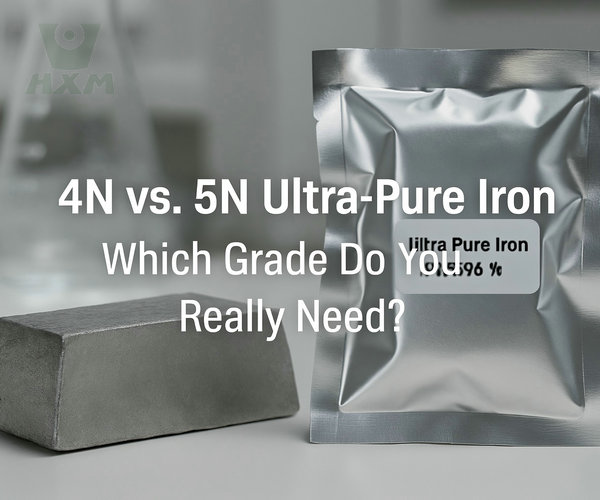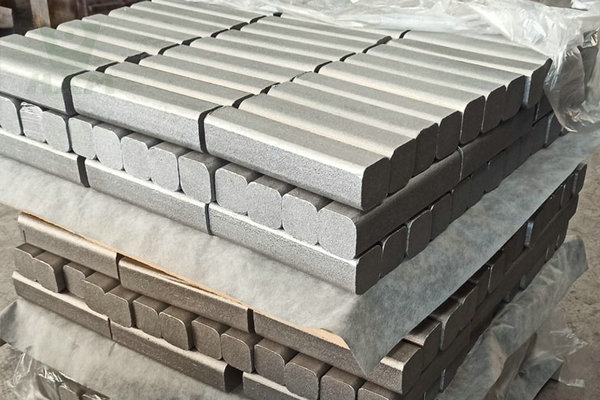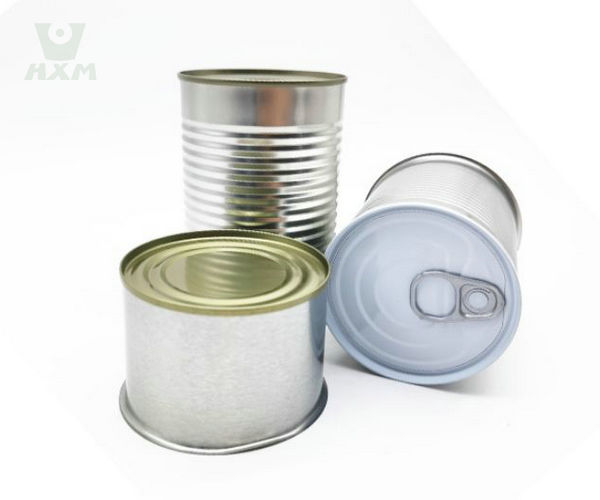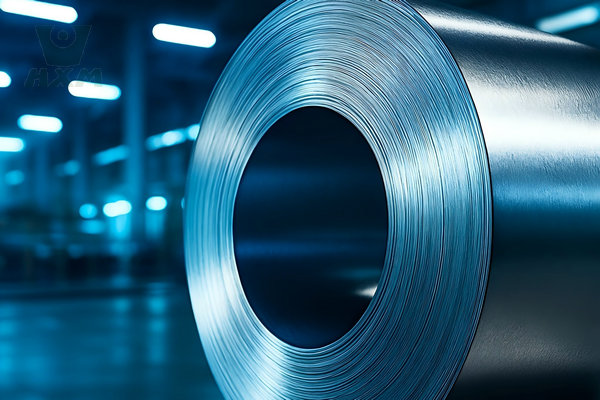
In the world of high-performance materials, precision is everything. A single, microscopic impurity can be the difference between a successful aerospace launch and a critical failure. This is especially true when working with ultra-pure iron.
While many suppliers offer “high-purity” materials, the distinction between different grades—specifically 4N and 5N—is one of the most crucial decisions an engineer or procurement manager can make. It’s a choice that directly impacts performance, cost, and the ultimate success of your project.
But what do these numbers actually mean? And how do you decide which grade you really need? As material experts, we’re here to break it down.

Ultra-Pure Iron
Ultra-Pure Iron (High Purity Iron) Professional Industrial China Ultra-Pure Iron (High Purity Iron) Manufacturer Huaxiao Metal is a trusted supplier of ultra-pure iron (99.99% /
Whether you’re in R&D, manufacturing, or procurement, our team is ready to assist you with material recommendations, datasheets, and competitive pricing.
👉 Contact us now to get a quote for 4N or 5N ultra-pure iron, and receive expert guidance tailored to your application.
The "N" Notation Explained: It's About What's Missing
First, let’s clarify the terminology. The “N” in 4N or 5N stands for “nines.” It’s a simple way to denote the percentage of purity.
4N Pure Iron: Refers to iron that is 99.99% pure.
5N Pure Iron: Refers to iron that is 99.999% pure.
On the surface, the difference between 99.99% and 99.999% seems negligible. But in metallurgy, the story isn’t about the percentage of iron—it’s about the tiny percentage of what’s left over.
Think of it in terms of impurities measured in parts per million (ppm):
A 4N (99.99%) pure material contains a total of 100 ppm of impurity elements.
A 5N (99.999%) pure material contains a total of only 10 ppm of impurity elements.
A 5N grade isn’t just slightly purer; it’s an entire order of magnitude cleaner than a 4N grade. These impurities are typically residual elements from the manufacturing process, such as Carbon (C), Sulfur (S), Phosphorus (P), and various dissolved gases.
4N vs. 5N Ultra-Pure Iron: Key Differences
| Feature | 4N Ultra-Pure Iron (99.99%) | 5N Ultra-Pure Iron (99.999%) |
|---|---|---|
| Total Impurities | ~100 ppm | ~10 ppm |
| Common Applications | Magnetic cores, battery R&D, general lab use | High-precision sputtering, aerospace, and quantum devices |
| Price | Moderate | Significantly higher |
| Availability | More widely available | Often made-to-order |
| Processing & Certification | Standard laboratory level | Requires stricter purification & documentation |
The key takeaway is that the added cost of 5N ultra-pure iron is only justified if your application truly demands extremely low impurity levels.
How a Few PPM Can Drastically Affect Performance
These microscopic impurities act as structural and electromagnetic roadblocks within the material’s crystalline structure. Here’s how reducing them from 4N to 5N levels creates a significant performance leap:
1. Electromagnetic Properties
For applications like high-performance electromagnets or magnetic shielding, the goal is to guide magnetic fields with minimal energy loss. Impurities disrupt the iron’s crystal lattice, “pinning” magnetic domains and making it harder for the material to magnetize and demagnetize.
4N Iron: Offers excellent soft magnetic properties with low coercivity (low energy loss).
5N Iron: Delivers exceptional soft magnetic properties. The near-perfect lattice structure results in extremely low coercivity and higher permeability, making it the gold standard for devices where energy efficiency and signal integrity are paramount.
2. Mechanical Properties & Workability
Impurities, especially elements like sulfur, can cause brittleness. By reducing these elements, the material becomes more ductile and malleable.
4N Iron: Is highly workable and suitable for most forming processes.
5N Iron: Exhibits superior ductility, making it ideal for creating extremely thin foils, fine wires, or complex components that undergo significant plastic deformation during manufacturing without cracking.
3. Chemical Resistance and Predictability
In sensitive environments, impurities can act as initiation sites for corrosion or create unpredictable behavior in alloys.
4N Iron: Provides a stable and reliable base for many high-performance alloys.
5N Iron: Is essential when used as a melting stock for mission-critical superalloys (in aerospace or medical implants) or as a sputtering target for semiconductors. Its near-total lack of unknown variables ensures maximum predictability and reliability.
The Decision Framework: Choosing Between 4N and 5N
Now for the most important question: which one should you choose? The answer depends entirely on balancing performance requirements with budget constraints.
When to Choose 4N (99.99%) Ultra-Pure Iron:
4N is the high-performance workhorse. It provides a significant upgrade over standard industrial pure iron without the premium cost of 5N. Choose 4N for:
High-performance DC electromagnets and magnetic cores.
Magnetic shielding for less sensitive equipment.
The production of many standard high-performance alloys.
General research and development where extreme purity is not the primary variable.
The Bottom Line: If your application requires excellent magnetic and mechanical properties but is also cost-sensitive, 4N is almost always the right choice.
When to Choose 5N (99.999%) Ultra-Pure Iron:
5N is the pinnacle of purity for applications where failure is not an option and performance cannot be compromised. Choose 5N for:
Aerospace & Defense: Creating superalloys where fatigue life and material integrity are critical.
Semiconductor Manufacturing: As sputtering targets to ensure the purity of thin-film depositions.
Scientific Reference Materials: Used as a baseline standard for calibrating instruments.
Medical Devices: For components requiring the highest biocompatibility and predictable magnetic performance.
The Bottom Line: If your application is at the cutting edge of technology or safety, the additional investment in 5N purity is essential insurance for performance and reliability.
FAQ
What is the main difference between 4N and 5N ultra-pure iron?
The difference lies in the purity level. 4N is 99.99% pure, while 5N is 99.999%, meaning 5N has ten times fewer impurities.
Is 5N iron always better than 4N?
Not necessarily. 5N is more expensive and may not be required unless your application has very strict purity demands.
Do both grades come with certification?
Yes. At Huaxiao Metal, we provide full material certification for both 4N and 5N grades, including composition reports.
How should ultra-pure iron be stored?
Store in vacuum-sealed packaging or inert gas environments to prevent oxidation or contamination.







